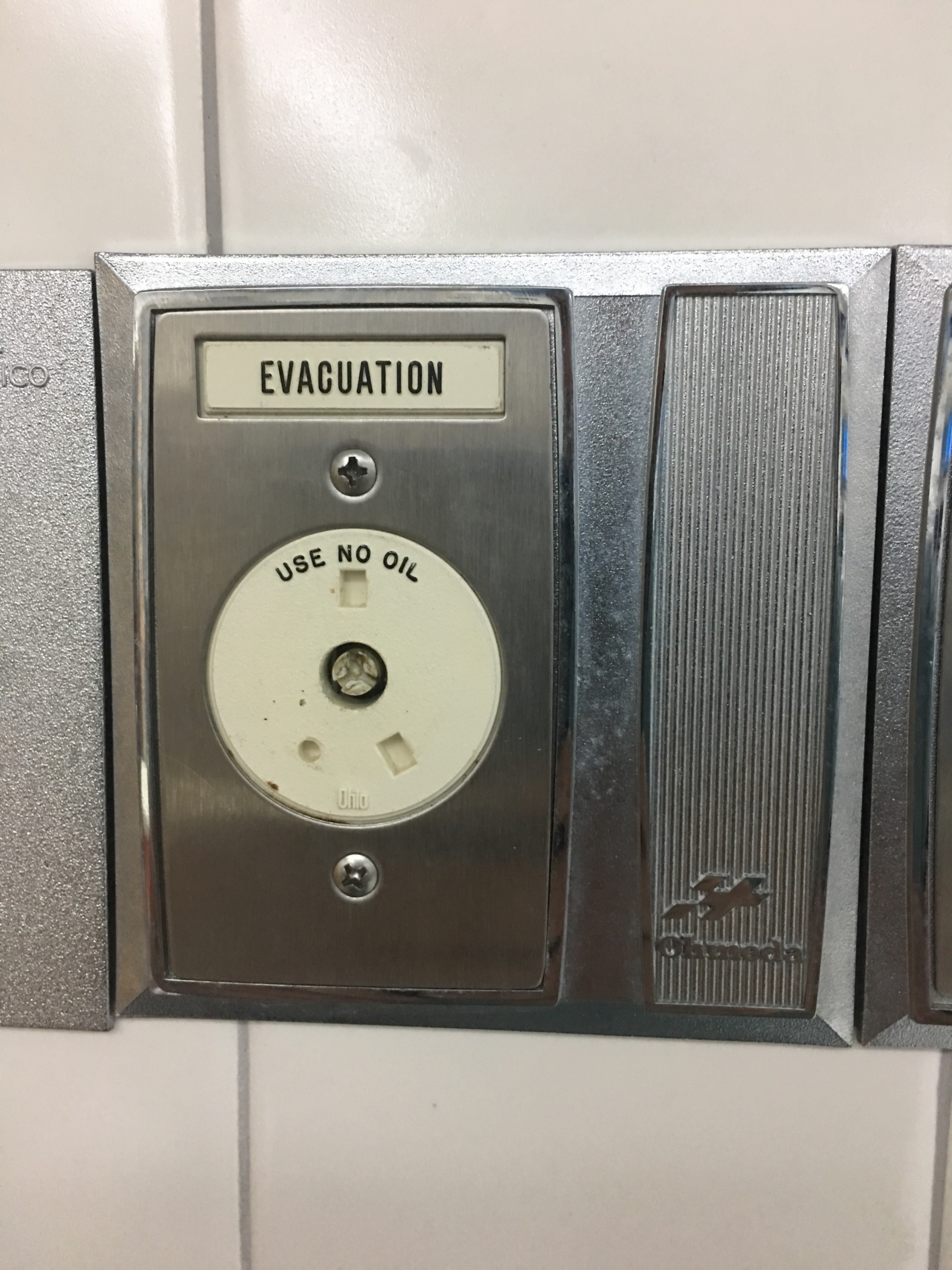Waste Anesthetic Gas Disposal (WAGD) Inlet Requirements
June 01, 2022/0 Comments/in Uncategorized / by Cary DardenWaste anesthetic gas disposal is used in healthcare facilities to evacuate rogue anesthesia gases during procedures on patient undergoing anesthesia. This protects both the staff and patient from a potentially dangerous build of these gases in a space like an operating room. NFPA 99 defines it in Chapter 3 (2018 edition ref. 3.3.181) as: “The process of capturing and carrying away gases vented from the patient breathing circuit during the normal operation of gas anesthesia or analgesia equipment.” WAGD may also go by the acronym “AGSS” (anesthetic gas scavenging system) and inlets installed in an OR may be labeled “evacuation” if they were installed prior to the year 2000 or so.
WAGD inlets are required to be labeled / colored differently from medical vacuum inlets (see table 5.1.11 in NFPA 99) and also to be keyed differently so that fittings and devices may not be interchanged between the WAGD and medical vacuum systems.
When or where is a facility required to have a dedicated WAGD inlet?
As part of the 2005 edition, NFPA 99 revised the wording to read that a facility must have a dedicated WAGD inlet in “…all locations where nitrous oxide OR halogenated anesthetic gas is intended to be administered” – NFPA 99 – 2018 ed. ref. 5.1.5.16. NOTE: this reference has remained the same in all subsequent editions as of this writing (2005, 2012, 2015, 2018 & 2021). It should be noted that if a facility has locations where they occasionally anesthetize patients (e.g. CT Scan, X-Ray etc.) by rolling an anesthesia machine into the room, a dedicated WAGD inlet should be provided. Remember however that if you add a WAGD inlet, the room or space is now an anesthetizing area which means it needs a dedicated zone valve (NFPA 99 2018 edition ref. 5.1.4.6.2) and very likely will need an area alarm depending on the level of sedation being administered.
Outlet keying styles (Ohmeda / Medaes quick connect style pictured)
The requirement to have a dedicated WAGD inlet that is keyed separately from medical vacuum inlets was first introduced in the 1996 edition of NFPA 99. Prior editions of NFPA 99 only required WAGD inlets to be keyed differently when they were part of a separate source (such as a dedicated WAGD central supply system) other than the medical vacuum system. The two pictures below demonstrate inlets manufactured under the different requirements from the various edition of NFPA 99. The picture on the left (evacuation – white) has the same keying style as medical vacuum, while the picture on the right (WAGD – purple) has a keying style specific to WAGD only. The inlets in these pictures are utilizing the Ohmeda / Medaes style quick connect style, there are similar examples for Puritan Bennett quick connect, Chemetron quick connect and DISS (Diameter Index Safety System) style.
 Old style waste anesthetic gas disposal inlet labeled “Evacuation” and keyed the same as medical vacuum |  Current style waste anesthetic gas disposal inlet labeled “WAGD” with unique keying so as to not be interchangeable with medical vacuum |
Installation of WAGD inlets – “the 5 ft. rule”
Another item that was added within the 2005 edition of NFPA 99 was for dedicated WAGD inlets that were joined to the medical surgical vacuum system (Med Vac / WAGD combined use system) to be connected a minimum of 5 ft from any medical vacuum inlet. When the clinical staff is operating on a patient there are instances when the waste collection canister fills up and the vacuum waste gets into the pipeline. There had been reports that this would not only occlude or block off the vacuum inlet but it would also occlude the WAGD inlet when it was tied into the piping directly next to the vacuum inlet. The 5 ft rule is there to help prevent the loss of the WAGD circuit in an OR due to a blocked vacuum inlet to ensure the continued safety of the staff and patient during the procedure.
Prohibited uses for WAGD inlets
It is worth noting that WAGD (and medical vacuum for that matter) are not to be used for “non-medical applications” – NFPA 99 2018 edition ref. 5.1.14.1.4. The body of that paragraph lists vacuum steam condensate return as an example, but there is an associated reference in the annex (ref. A5.1.14.1.4) that gives more guidance on this reference. That annex reference adds the following items as prohibited uses for medical vacuum and WAGD:
- Scope cleaning
- Decontamination
- Laser plume
Keep in mind that the annex of NFPA 99 is for information purposes only and it not enforceable, having said that an AHJ can enforce the code how they see fit so it is best to abide by the material in the annex when possible.
